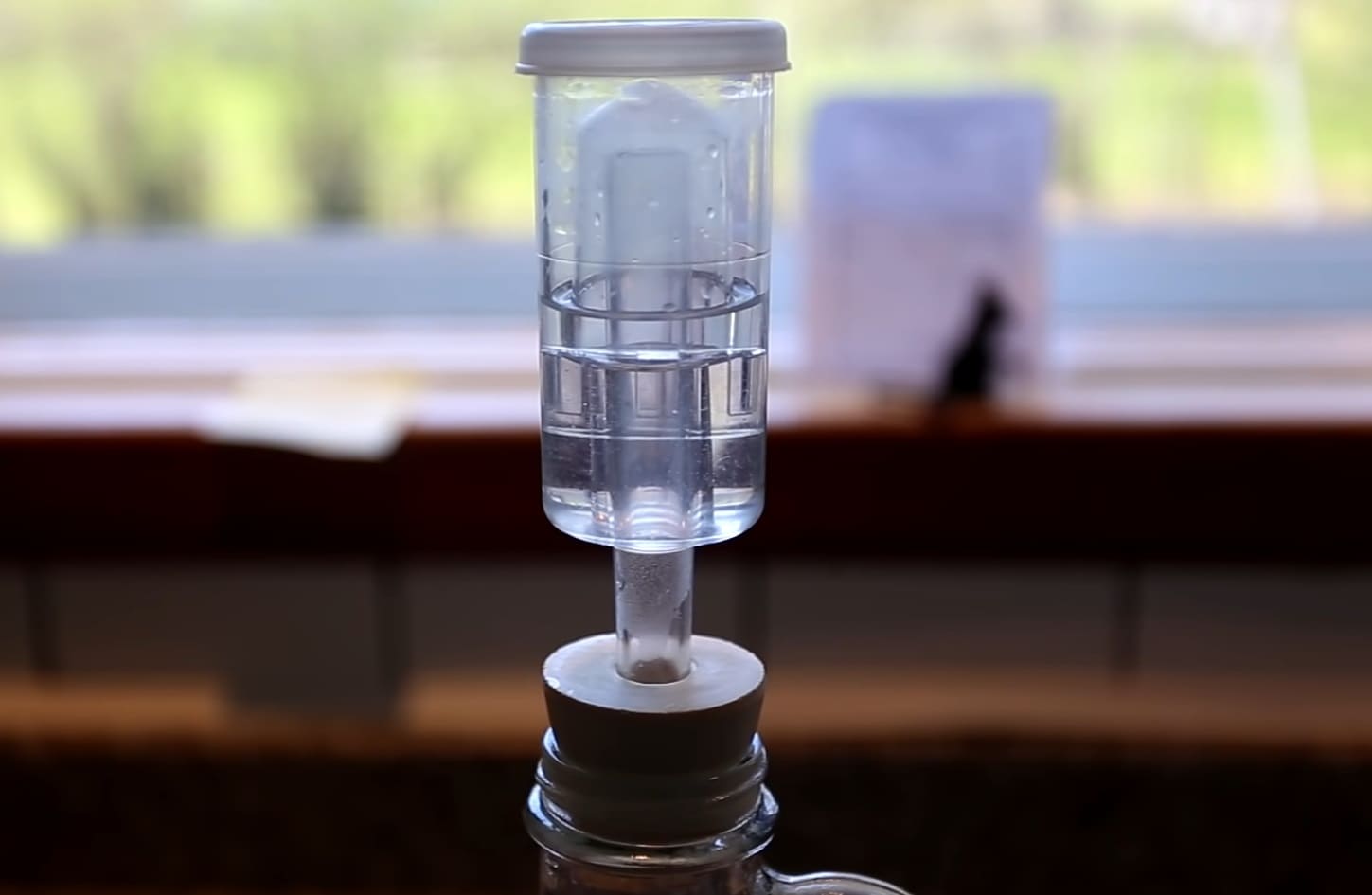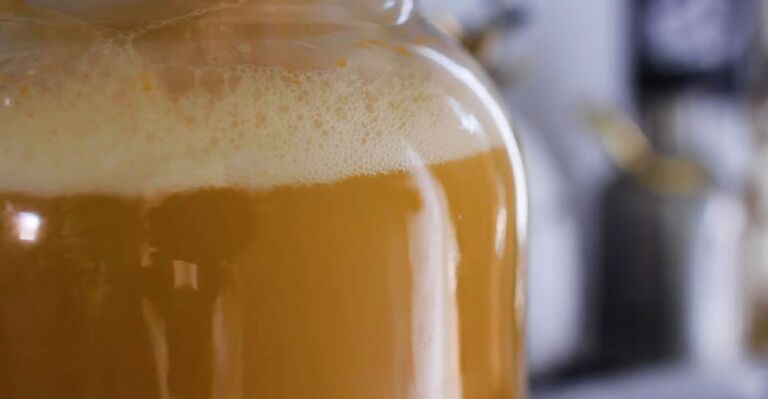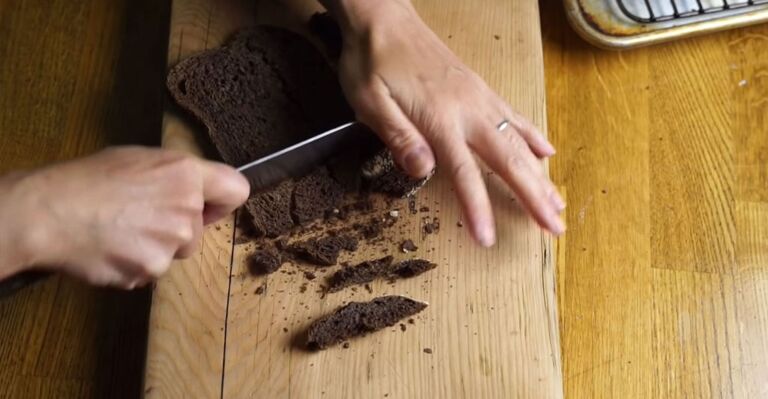Can You Ferment Sugar Water?
Bubbly brews from basic ingredients? It may seem too good to be true, but fermenting sugar water into something delicious is easier than you think. You can turn sweetened water into a tangy, effervescent beverage with just a few simple steps and ingredients in your pantry. From homemade soda to fruit-flavored fizzy drinks, fermented sugar water unlocks a world of possibilities. Though the process involves some patience, the tantalizing aromas and lively carbonation make the wait worthwhile. So, can you transform plain sugar water into something special through fermentation? Let’s dive deeper into this surprising technique for crafting sparkling fresh drinks from scratch. The secret is closer than you imagine and more satisfying than any store-bought sip.
Recap in Brief
You can easily ferment sugar water to create a probiotic-rich, naturally carbonated beverage. The key is adding a fermentation culture like brewer’s yeast, lactobacillus, or whey to feed on the sugar. Over 1-3 weeks, the culture will consume most of the sugar, producing lactic acid, alcohol, and CO2 as byproducts. This natural carbonation produces a tangy, refreshing homemade soda or tonic water. Temperature controls fermentation speed. The more sugar you use, the higher the alcohol content. With sugar, water, and culture, you can craft fizzy probiotic drinks like kvass, kefir, or kombucha.
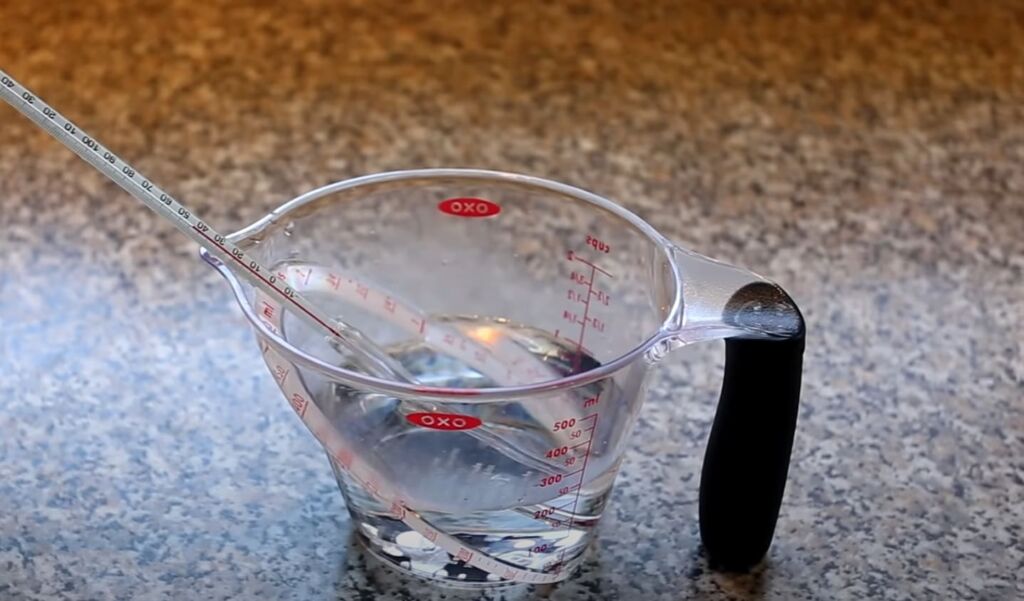
Materials Needed
Now that you know sugar water can be fermented, what do you need to get started? Fermenting sugar water is simple and only requires a few ingredients and materials.
The basic ingredients are sugar, water, and a fermentation culture. You can use regular granulated sugar, honey, maple syrup, agave, or any other sugar source for the sugar. Just be aware that the type of sugar will impact the flavor. For beginners, granulated cane sugar is recommended.
The water is also important. Tap water contains minerals and chemicals like chlorine that can inhibit fermentation, so use purified or bottled water. Distilled or filtered water works best.
The most crucial ingredient is the fermentation culture. This can be brewer’s yeast, wine yeast, lactobacillus bacteria, whey from yogurt, ginger bug, or kombucha from a previous batch. The culture converts the sugar to alcohol, carbon dioxide, and acids. Popular cultures for sugar water are brewer’s or wine yeast.
For materials, you’ll need:
- A sterilized jar, like a mason jar, to ferment in
- Cheesecloth or lid to cover the jar
- An elastic band or string to secure the covering
- Funnel to pour ingredients into the jar
- Spoon for mixing
- Measuring cups and spoons
Sanitizing all equipment is vital to prevent mold or contamination. Use boiling water or an antimicrobial spray. After preparing the sugar water and culture mixture:
- Pour it into the sanitized jar.
- Cover it with a cloth or lid.
- Secure it with the band, and ferment.
The longer it ferments, the more carbonation builds, creating that signature fizz. Taste frequently until it reaches the desired tart, tangy flavor.
Then enjoy your fresh, homemade fermented sugar water!
Procedure
Fermenting sugar water is a simple process that only takes a few steps. Here is an overview of the basic procedure:
- First, dissolve the sugar in purified water. Use around 1 cup of sugar per 5 cups of water. Heat the water to help dissolve the sugar completely, then let it cool to room temperature.
- Next, add the fermentation culture like brewer’s yeast. About 1/2 teaspoon of yeast per cup of sugar water is sufficient. Thoroughly mix and stir the yeast into the solution.
- Now, pour the mixture into a sanitized glass jar or jug. Leave at least an inch of headspace at the top. Cover the opening with a coffee filter, cloth, or loose lid to allow air exchange. Secure with an elastic band or string.
- Store the fermentation vessel out of direct sunlight in a warm area, ideally 65-75°F. This temperature range will encourage fermentation.
- Over the next 3-7 days, active fermentation will occur. You may see bubbling or foaming as the yeast converts sugar to CO2 and alcohol. A fruity, yeasty aroma will develop.
- Check the batch daily and release built-up CO2 by briefly unscrewing the lid. Fermentation is complete once the bubbling subsides and the flavor becomes tangy and sour.
- Carefully pour the fermented sugar water into sanitized bottles using a funnel. Leave about 1 inch of headspace. Cap tightly. Let condition for 2-3 more days to carbonate before refrigerating.
- Your homemade fermented sugar water is now ready! Expect a tangy, bubbly beverage with notes of yeast and sourdough. The longer it ferments, the more sour and complex the flavors become. Enjoy immediately chilled or let age for weeks to months to develop further.
You can create a probiotic, naturally carbonated drink from sugar and water alone with just a few basic steps. Experiment with different fermentation lengths and add in flavors like fruit or herbs. The possibilities are endless!
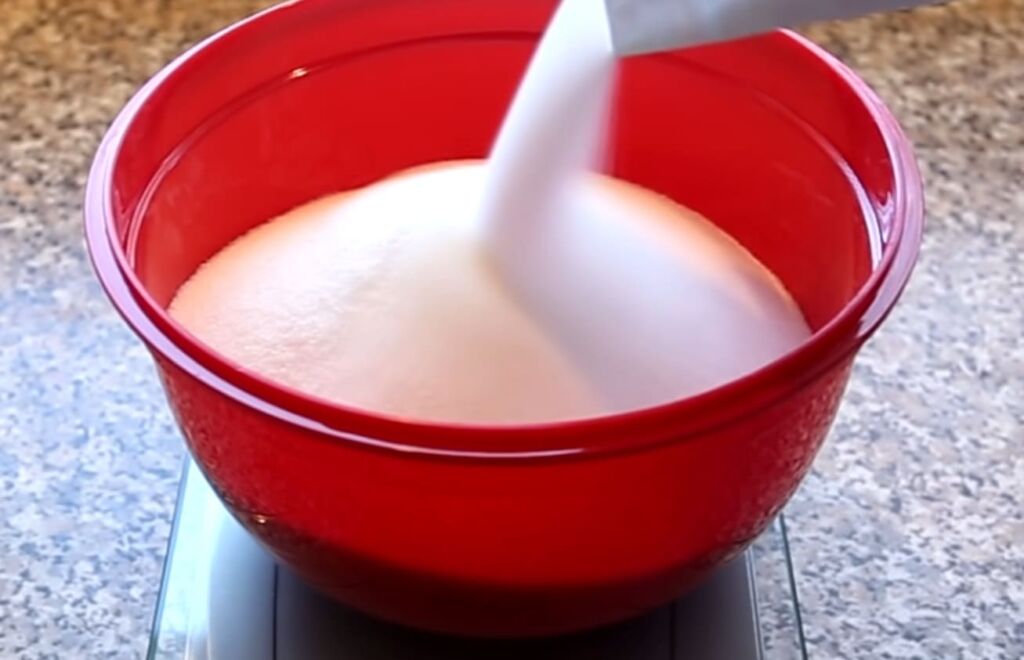
Safety Precautions
While fermenting sugar water is generally safe, there are a few precautions to keep in mind:
- Use an airlock or breathable cover – This allows CO2 to escape rather than build up inside a sealed container, which can create an explosion risk.
- Open cautiously – After active fermentation, slowly open the vessel to release the pressure before handling.
- Methanol production – Fermentation does create trace amounts of methanol, which is toxic. But sugar water fermentation produces very little, not enough to be dangerous.
- Monitor temperature – Keep fermenting vessels between 60-75°F. Higher temperatures can encourage methanol production. Lower temperatures slow fermentation.
- Dilute before drinking – The end product is very sugary. Dilute with 1 part fermented sugar water to 3-5 parts plain or soda water before drinking.
- Rinse produce – If adding fruit, rinse produce to avoid pesticide contamination.
- Use sterile equipment – Sanitize any equipment with boiling water or antimicrobial spray to avoid mold.
- Check alcohol content – Higher sugar concentrations create more alcohol. Monitor with a hydrometer if given to children.
Following basic food safety practices and using airlocks, breathable lids, and sterile equipment, fermenting sugar water into a tasty homemade soda, tonic, or kvass can be a fun, safe project. Take precautions against CO2 buildup and potential methanol production by controlling temperature and diluting the final beverage before drinking.
Moonshining
While it may be tempting to use fermented sugar water to make moonshine alcohol, also called “sugar shine,” it’s important to follow laws and safety precautions.
Technically, distilling alcohol without proper permits and licenses is illegal. However, small batches for personal use may be allowed in some areas. Always check your local and federal laws first.
If you do choose to distill fermented sugar water, keep these guidelines in mind:
- Use stainless steel or copper equipment only. Other metals can leach toxins. Copper is best for removing sulfides.
- Throw out the first 50-100 ml of distillate, known as the “head.” This contains most contaminants.
- The finished product should be 80 proof (40% ABV) or less for safety. The higher proof is more explosive.
- Dilute to 40% ABV or less before drinking to reduce alcohol’s dehydrating effects.
- Distill in a well-ventilated area away from sparks or flames since alcohol vapor is flammable.
- Monitor the vapor temperature. Too hot risks burning and higher methanol production. Keep between 175-185°F.
- Methanol boils before ethanol, so the first distillations will contain more methanol. Safely discard this fraction.
- Add activated copper mesh to the distillation apparatus to filter out sulfides and other volatiles.
- Always exercise caution when distilling. Don’t leave it unattended. Keep away from children.
While distilling sugar water into moonshine is possible, it requires knowledge and equipment. Consult experts first and follow all legal regulations in your area. Most importantly, enjoy it responsibly!
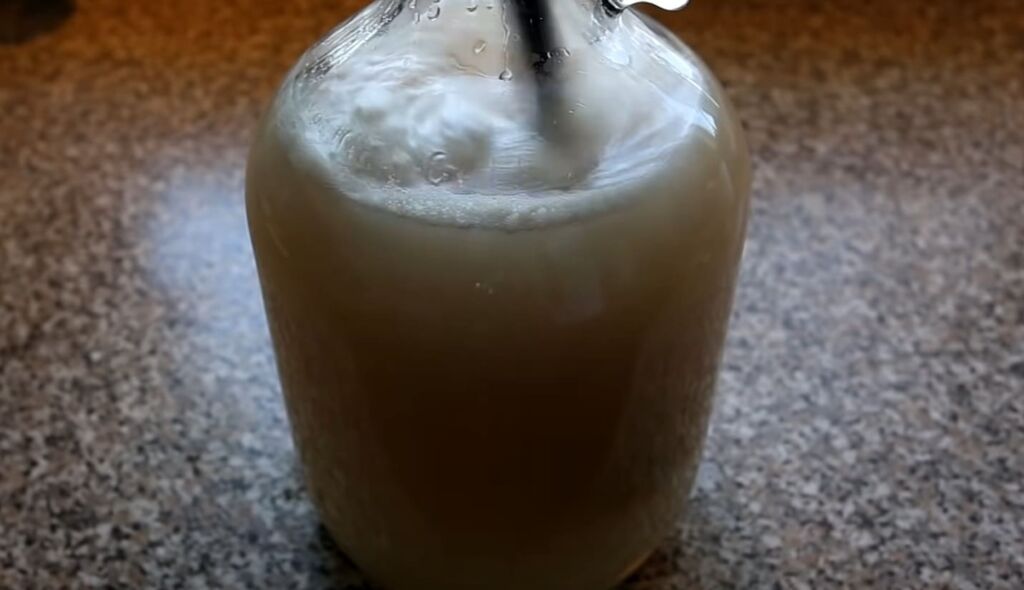
Science Experiments
Fermenting sugar water is a simple process that allows people of all ages to explore fundamental science concepts. You can set up experiments demonstrating fermentation, carbonation, and microorganisms with just a few basic materials.
For younger kids, try these ideas:
- Add glitter to sugar water before fermenting. They’ll be able to see the carbon dioxide bubbles carry glitter as fermentation produces gas.
- Split sugar water between multiple jars, adding different yeast types to each. They can compare how yeast strains have different activity.
- Save bottles from various fermentation lengths. They can taste samples to experience how flavor changes over time.
For older kids and adults, advanced concepts like alcohol production or yeast growth can be tested:
- Monitor alcohol content using a hydrometer. How does more or less sugar impact the final ABV?
- Measure and graph yeast cell growth through fermentation. Use a microscope and hemocytometer.
- Experiment with different sugar sources. How does honey, agave, or maple syrup affect the end product?
- Try adding nutrients like orange juice or raisins to improve yeast health.
Fermenting sugar water allows young and mature scientists to gain first-hand experience with microbiology, chemistry, and the scientific method. And they’ll have a tasty, healthy beverage to enjoy afterward!
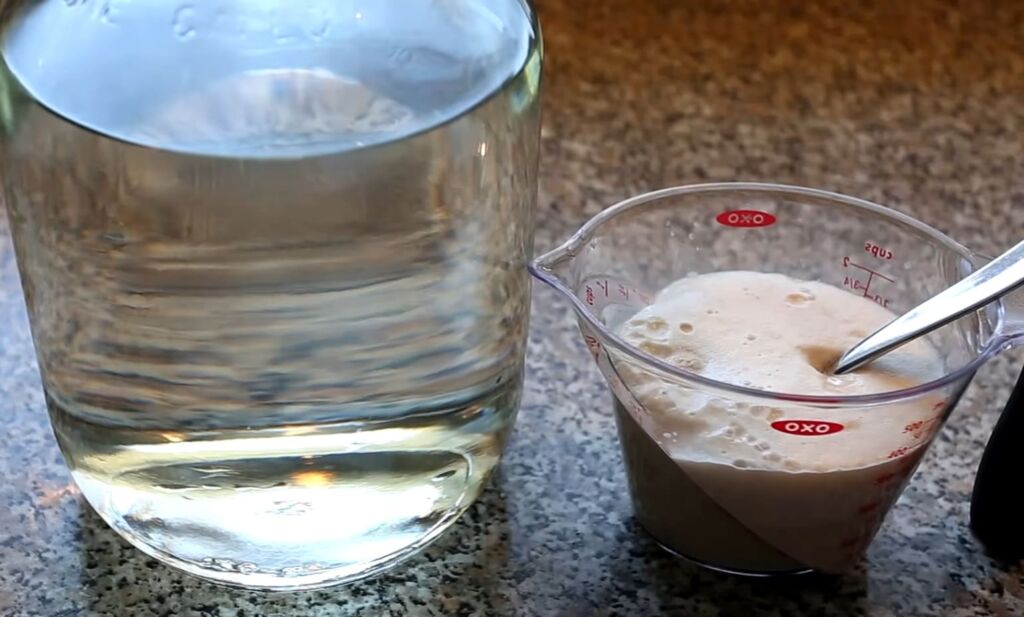
FAQ
What kind of yeast do you use to ferment sugar water?
Brewers and wine yeast are the most commonly used, but sourdough starters, yogurt whey, and ginger bugs also initiate successful fermentation. The yeast strain impacts flavor – wine yeast gives fruity notes, while brewer’s yeast has a more neutral taste.
Does fermented sugar water contain alcohol?
Yes, sugar alcohol fermentation creates small amounts of ethanol and methanol. But sugar water alone typically only reaches 1-3% ABV, less than most commercial kombuchas. More sugar equals more potential alcohol.
Does the sugar need to fully dissolve before adding yeast?
Yes, fully dissolving the sugar ensures the yeast can fully consume it and produce maximum alcohol and CO2. Heat helps dissolve granulated sugar. Stir constantly.
What liquids can you mix with fermented sugar water?
Mix with soda water, fruit juice or purees, lacto-fermented vegetables like carrots for a probiotic boost, vinegar for shrubs, or alcoholic spirits for cocktails.
How long does fermented sugar water keep?
Refrigerated, it lasts 1-2 months. The carbonation may fade over time. For long-term storage, bottle in flip-top bottles and freeze. Thaw and reuse as needed.
What are some flavor additions for fermented sugar water?
Fruit, herbs, spices, coffee, tea, vanilla, food-grade essential oils, and many other flavors complement sugar water nicely during fermentation. Get creative!
Can you ferment diet sodas or other artificially sweetened drinks?
No, the artificial sweeteners do not provide fermentable sugars. Stick to naturally sweet options like juice, honey, or agave to create carbonated probiotic drinks.
Can you use organic cane sugar instead of regular white sugar?
Yes, organic cane sugar will ferment just as well. The yeast will consume the sucrose sugars efficiently. Organic is a smart choice to avoid pesticide residues.
What’s the difference between tepache and kombucha?
Tepache uses pineapple rinds to ferment sugar water. Kombucha ferments sweetened black or green tea. Both create probiotic drinks but have distinct flavors.
How do you flavor secondary fermentation?
After the initial fermentation, add fruit, herbs, etc., to bottled sugar water. Leave 2-3 days at room temp for a second fermentation that naturally carbonates the flavorings.
What are some signs of contaminated or spoiled fermented sugar water?
Mold, rotten egg smells, bitterness, sliminess, or changes in appearance or
smell can indicate contamination. When in doubt, discard!
Related Video: How to make Alcohol at Home (Ethanol)
Final Thoughts
As we’ve explored, the answer is a resounding yes – you can ferment water sweetened with sugar into a delicious, tangy, naturally carbonated beverage. The simple process only requires three basic ingredients – sugar, water, and a fermenting culture like yeast or whey. Combining these components, the fermentation process converts the sugary water into a drink packed with probiotics, fizz, and dynamic flavor.
While fermenting sugar water is fundamentally straightforward, following best practices is key. Use purified water, completely dissolve the sugar, sanitize equipment, tightly seal vessels, monitor temperature and alcohol content, and take precautions to allow CO2 to escape. Choosing the right yeast strain and fermentation length allows for final product customization. With some patience and safety measures, the rewards of fermented sugar water are plentiful.
This versatile beverage has many applications, from kids’ science experiments to cocktail mixers. The next time you’re seeking a fizzy refreshment made from basic pantry staples try fermenting sugar water. The process illuminates the wonder of microbial activities, while the finished drink provides a tasty dose of homemade probiotics. Trust that some sugar, water, and culture can yield something special. Your tastebuds and gut will thank you!

